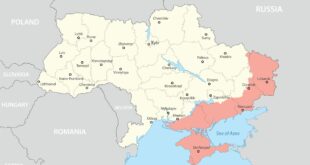Eng. Saleem Al Batayneh
In the symphony of global economies, Jordan recently played a dissonant note, echoing far beyond its borders. The World Bank’s decision to reclassify the country from a middle-high-income nation to a low-middle-income one on July 1 sent shockwaves through economic and social circles. This downgrade, signaling a significant drop in per capita income, raises red flags about Jordan’s economic stability and the well-being of its citizens.
The consequences are not merely statistical; they are deeply woven into the fabric of daily life for Jordanians. Reduced job opportunities, compromised funding for essential projects, and limitations in delivering basic services like healthcare and education are looming threats. The downgrade could usher in an era of increased poverty rates, exacerbating existing economic challenges and painting a bleak picture for the nation.
Jordan’s economic indicators, particularly its meager spending on health and education compared to global benchmarks, underscore the urgent need for reform. The Gini index, reflecting the fairness of national income distribution, reveals a stark contrast between Jordan and the majority of countries worldwide. While others invest between 50-60% of their GDP to ensure a decent life for their citizens, Jordan allocates a mere 2.1%, leaving over 60% of its population outside the realms of economic and social development.
The situation demands swift and decisive action. The government must embark on a bold economic plan encompassing tax exemptions, reduced interest rates, streamlined commercial loan procedures, and a comprehensive risk management framework. Supporting exports and lowering production costs are vital steps to revive the nation’s economic heartbeat. In doing so, Jordan can send positive signals to its citizens, international financiers, and investors, reassuring them amid uncertain times.
Unfortunately, Jordan was the only country in the world that witnessed a reduction in its rating last July 1! The World Bank downgraded Jordan’s classification from a middle-high-income country to a low-middle-income country! According to the bank’s measure, the Jordanian per capita share of national income (GDP) is between $1,136 and $4,465 per year! Although until 2022 it was between $4096 – $12695 / year.
This classification portends a danger that cannot be ignored and would affect economic and social aspects such as reducing job opportunities, the government’s inability to finance vital projects and provide basic services such as health, education, transportation, and infrastructure, the decrease in the volume of funding from international financial institutions, and high poverty rates. Unemployment also means that the country suffers from economic challenges and a weakness in the gross national income per capita.
The essence of the battle of indicators is based on differences, and yet the GDP is still considered the country’s economic performance card and the best indicator for guiding government policies, as the GDP is one of the most important numbers when studying the macroeconomy, which is measured in many areas (such as income and production). Investment, health, education and vocational training. If we want to measure the economic growth of a country, all we have to do is look at the infrastructure of that country’s educational and health system.
According to the Gini index, which measures the fairness of national income, the majority of countries in the world spend between 50-60% of their GDP to provide a decent life for their people, but in Jordan we do not spend more than 2.1% of the GDP share. ! There are more than 60% of Jordanians outside the circle of economic and social development.
A few months ago, a friend showed me a study conducted by the National Aid Fund in cooperation with the World Food Program (WFP) in March 2023. The study showed that about 60% of the families receiving assistance from the National Aid Fund suffer from food insecurity or are vulnerable to it. ,,,, On June 13, 2023, Human Rights Watch issued a 174-page report in which it said that the cash transfer program in Jordan, funded by the World Bank, is undermined by errors, discriminatory policies, and stereotypes about poverty in Jordan! The approach followed by the World Bank and the Jordanian government in allocating cash aid using (algorithms) threatens the rights of the poor in Jordan.
The report indicated low income rates and weak growth in family income! And to reduce real per capita growth, and to the fact that Jordan currently ranks fourth in the Arab world among the poorest countries, and that one in every four people living in Jordan, Iraq, Syria, Lebanon and Yemen suffer from food insecurity.
In his book (The Prince and the Pauper), American author Mark Twain (1835-1910) says that there is no poor country, there are countries that fail in managing their resources, and poverty is not a disease that is transmitted hereditarily through genes. The quote ended: Talking about the poverty of Jordanians is not the whole truth, but it is certainly an essential part of the truth. Poverty in Jordan has taken an upward curve and has begun to include more followers every year, and the poor in Jordan are the ones paying the price. Recent World Bank statistics indicate that The poverty rate in Jordan will rise (11 percentage points) from 15.7% to reach about 27%.
The situation in Jordan is currently likely to lead to more economic and living instability, and there is no need to list numbers on the spread of poverty and unemployment and on the decline in the level of education and health care. Economic development is not numbers issued by anyone, and the fear of an economic catastrophe with a heavy social price,,, so the poverty report The aggregate for the year 2023 issued by the World Bank warned of possible shocks caused by an increase in the extent of poverty and the number of poor people in the coming years in the Middle East region.
Jordanian officials have grown accustomed to the refrain that everything is fine, but questions persist. Are there economic activities not accounted for in the official records, skewing the nation’s economic narrative? It’s time for a reality check and a concerted effort to address the root causes of this economic downturn.
In the face of potential shocks outlined in the World Bank’s 2023 poverty report, Jordan stands at a crossroads. The path forward requires not just assurances but concrete actions to instill confidence, foster economic growth, and ensure a brighter future for all Jordanians. The clock is ticking, and decisive measures are the need of the hour
Intervention by the state must be early to rationalize economic action for fear of sudden collapse, while developing a bold economic plan that includes tax exemptions, reducing bank interest rates, facilitating commercial loan procedures, reducing direct and indirect taxes, supporting exports, and reducing production costs. And establishing a general framework for managing risks and creating economic initiatives that will revive the heart of an economy sick with the phobia of borrowing, aid, and grants if we want to overcome our economic and financial crisis. This would send positive messages to Jordanians, international financiers, and investors to reassure them.
It is difficult to aspire to economic growth without monitoring the level of productivity, as spending on the health, education, and transportation sectors reduces people falling into poverty.
Note: All information and data are available within the framework of the World Bank’s Open Data Guide.
Eng. Al Batayneh was a former member of the Jordanian Parliament
 Geostrategic Media Political Commentary, Analysis, Security, Defense
Geostrategic Media Political Commentary, Analysis, Security, Defense





